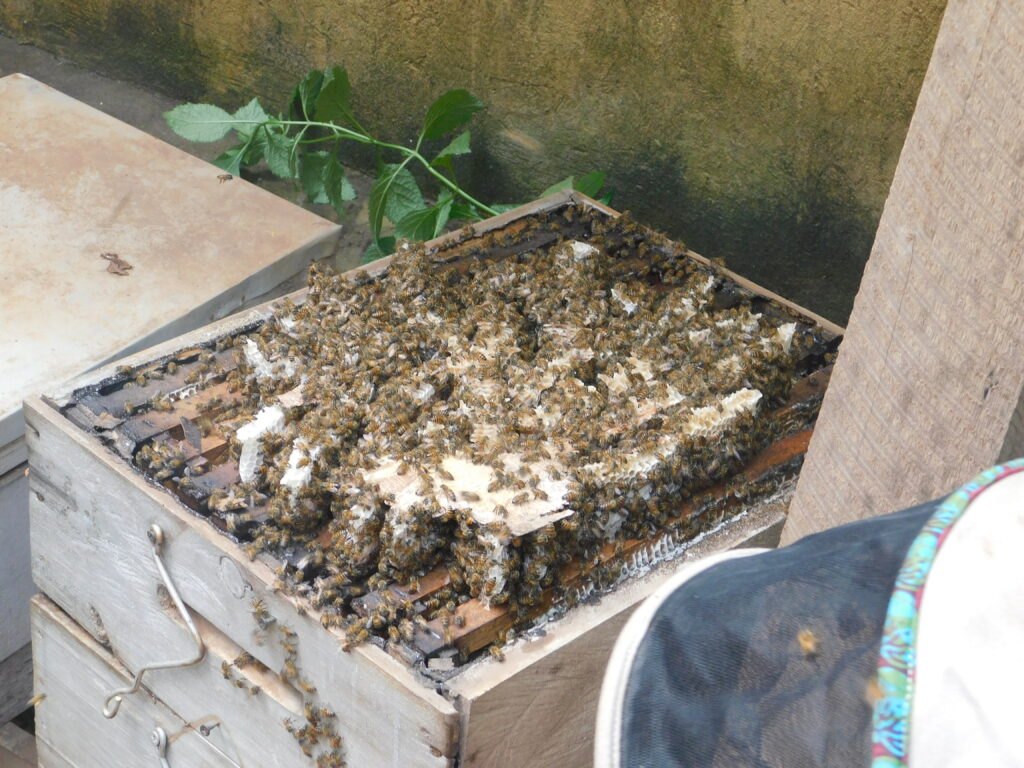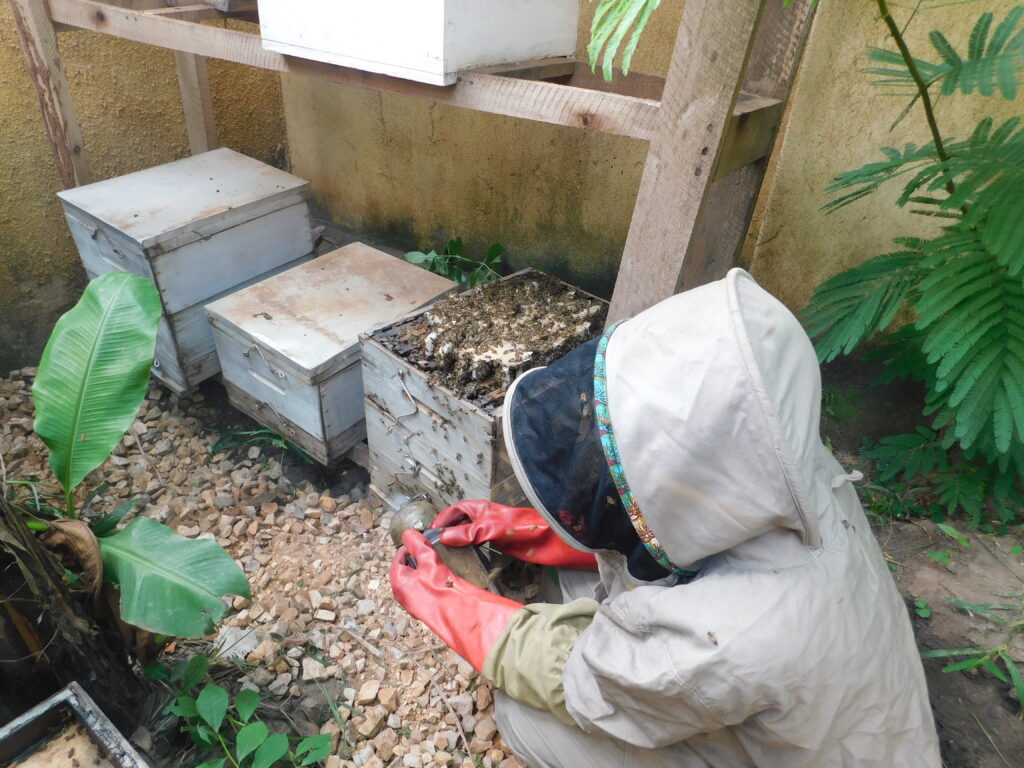By Joshua Kato

Inside a fence surrounding three rented houses in Kyebando, off the Northern by-pass, there are over ten bee hives quietly stashed in one corner of the fence. All of them are colonized! Although the fence houses three families, the bees have never attacked them.
“I wanted to show people that it is possible to keep bees in an urban area,” Kuteesa says. On a Sunday morning, Kuteesa successfully carried out a check of the hives to ascertain if they fine. The bees never became wild at all.
“It is a matter of handling. Bees know when somebody is attacking them and of course they react defensively. But if you gently open the hives, they will not attack you,” he says. Kuteesa used a smoker to subdue them.
“Even when you use a smoker, do not put in grasses or elements that produce a stinging/sharp smell. These irritate the bees and they attack you or anybody nearby,” he advises.
Honey is not just the sweetest product, it also gives sweet money. Kuteesa shows that apiary can be practiced from anywhere in any space. For a start, all you need are say 10 beehives. Depending on where you get them, this can cost you at least sh1-sh2m if they are fully colonized. If you do not have enough space, you can set up stands with each taking 3 or 4 hives.
Kuteesa says that for the 10 hives, it means that you need only 3 stands. To construct these wooden stands, you need spend less than sh100,000. With these in place, the other requirements include a bee-keepers suit which costs sh100,000. This is won by the bee keeper during harvesting. Overall, with sh2.5m one can start a modern urban apiary enterprise with 10 hives.
According to Kuteesa, from the 10 hives placed in the corner of your compound, each can produce at least 34kgs of pure honey per year. This translates to 340kgs per year. At a farm gate price of sh15,000 per kilogram, this translates into sh5.1m from the 10hives. And yet, input in form of labor is very low. Bees have got very low predators and are not attacked by diseases so you do not need to buy medicines for them. A bee hive remains colonized for as long as its structure is still right. Bees multiply and create new ones often.

Selection of apiary site
-Water availability; bees need water to thrive in their business of producing honey. Make sure that there is a water source within a radius of 500metres. Although bees are known to travel for over 5kms looking for water etc, the nearer the better. “If there is no water source, you can put up your own water sources, in small sauce pans or pails near the apiary site,” Kuteesa says.
-Good flowering plants; Bees process honey from nectar. The sources of natural nectar are mainly flowers. This is therefore why it is important to have flowering plants near the apiary. These can be coffee, mangoes, maize, bananas, calliandra, Eucalyptus, simsim plants etc. However for Kuteesa`s urban bees, he places sugar water, maize bran, cassava flour from which the bees collect nectar. “With this system, the bees do not have to go so far away from the hives to look for nectar. If you observe closely, every bee that returns to the hives has nectar all over her legs and body,” he says.
-Have shade over the hives; bees do not like direct sunshine. Therefore, this is why you must select a site that has trees to create a shade. Direct sunshine makes the hives too hot for the bees to live in. “I cover the hives with an additional iron sheet to reduce the impact of the sun and rain water,” he says.
–Keep it away from any animals or animal shelters for example a kraal. Bees are easily irritated by animals and they may attack them. Animals may also meander into the apiary site hence causing attacks.






